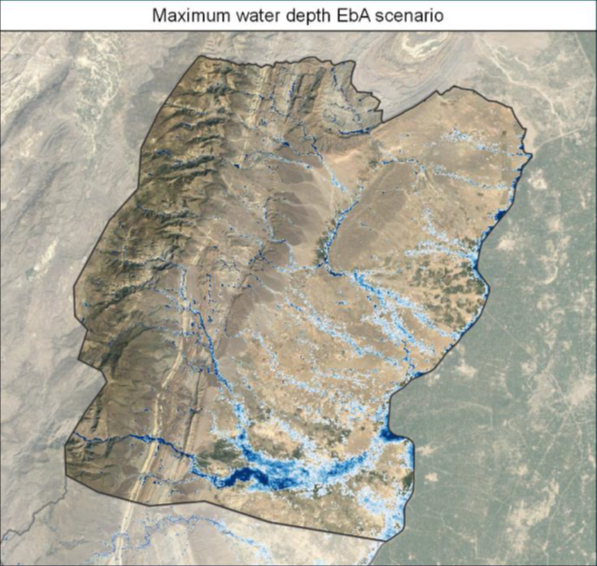Feasibility Study Recharge Pakistan
- Client
- World Wide Fund for Nature (WWF)
- Year
- 2021-2022
- Location
- Pakistan
- Partners
- Water Sprint, Deltares, Pegasys
Nelen & Schuurmans, together with partners, has investigated the feasibility of Ecosystem-based Adaptation strategies (Nature-based solutions) with the goal of better protecting vulnerable areas in Pakistan from flooding. The impact of climate change on flooding was studied using hydrodynamic modeling in 3Di. With this study the effectiveness of NBs measures were quantified. The project is in support of a fund application to the Global Climate Fund (GCF).
Masood Arshad PhD, Senior Director, Footprint, WWF-Pakistan:
“The hydrological modelling of Nelen & Schuurmans has shown us the impact that our intended Green Infrastructure (GI) interventions have on reducing climate induced flood risks throughout the Indus River Basin.“
The challenge
Due to climate change, Pakistan’s flora and fauna will be under pressure in the coming years. WWF wants to protect this flora and fauna. The feasibility study carried out shows whether Pakistan can protect its flora and fauna using Ecosystem-Based Adaptation strategies (EbA’s). These natural adaptations should sustainably make the ecosystem more resilient to the effects of climate change.
Our solution

The applicability of EbA’s for protecting flora and fauna has been determined in several steps. First, the influence of climate change on temperature and rainfall in Pakistan was studied. Using a statistical analysis of historical data, repetition times for precipitation scenarios were determined. These scenarios were used as input in the hydrological and hydrodynamic models set up for the project areas.
Nelen & Schuurmans set up the hydrodynamic model of the areas of interest using 3Di. For each area of interest, applicable EbA’s were considered. EbA’s make use of natural solutions, this prevents the use of hard “gray” interventions. EbA’s have many advantages, it is cost-effective, multifunctional and helps protect biodiversity. EbA’s can be applied for multiple purposes, including climate-adaptive agriculture, reducing flood risk, and improving water quality. Examples of EbA’s include planting more vegetation or increasing water storage. After calibrating the models, the applicable EbA’s were added to the models for each area of interest. Using these hydrodynamic models, the effect of the EbA’s was then determined. This was done by looking at the maximum water depth that occurs in the flood scenarios.
The outcome
The model study carried out by Nelen & Schuurmans together with partners has shown that the proposed EbA’s, new vegetation, and increased water storage can help protect flora and fauna in Pakistan. These measures do this by contributing to replenishing ground water and reducing flood risk.
All cases